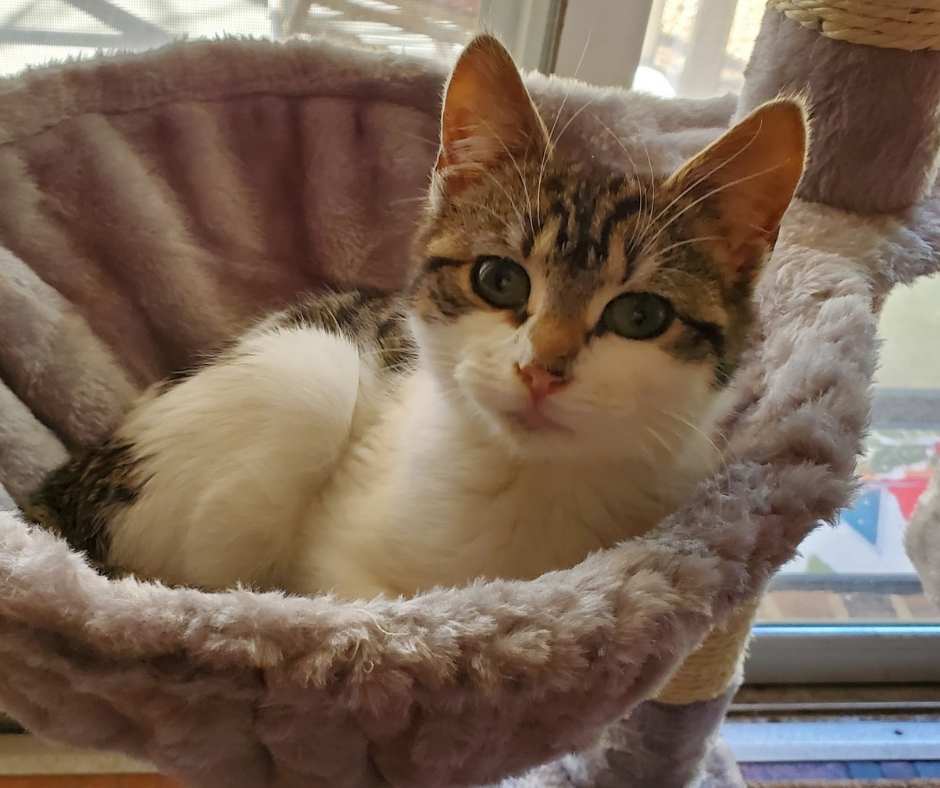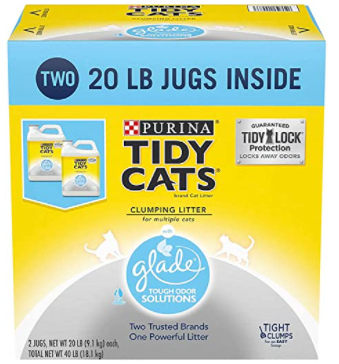It can feel daunting to litter train your new kitten – but it’s doable. The most important part is to be patient and consistent. This article will give you tips and tricks that will make the entire process much easier for you and your new furry friend.
But before that, here are the answers to some of the frequently asked questions about litter training.
Frequently Asked Questions About Litter Training
Congratulations on your new furry friend! Here are some frequently asked questions about how to teach your kitty to use the cat box to go to the bathroom.
Do kittens automatically use a litter box?
In short, no. You must litter train your kitten in the same way as you would an adult cat. However, the urge to scratch and dig to cover up their messes comes from instinct, so many kitties will quickly take to it.
How often do kittens poop?
Kittens generally poop around 3-5 times a day, but this will differ from kitten to kitten.

Should an 8-week old kitten be litter trained?
Yes, you can litter train a kitten as young as even 6 weeks old! But the truth is that kittens are different; some may be ready to start learning how to use the litter box at 8 weeks old, while others may not be ready until they’re a bit older.
The best way to determine if your kitten is ready for litter training is to watch their behavior and look for signs that they’re prepared to start learning.
Some of the most common signs that a kitten is ready for litter training include:
- Trying to bury their waste in sand or soil
- Going to the bathroom in the same spot repeatedly
- Acting anxious or restless when they have to go to the bathroom
How do I get my 8-week old kitten to use the litterbox?
The best way to litter train your kitten is to start with a small litter box filled with litter. Place your kitten in the litter box after they wake up from a nap or eat a meal. If they don’t go to the bathroom, try again in a few hours. If they still don’t go, consult your veterinarian, as there may be a health issue preventing them from using the litter box.
Once your kitten starts going to the bathroom in the litter box, gradually increase the size of the litter box. Repeat this process until your kitten uses the litter box without any issues.
How often should an 8-week old kitten use the litter box?
As mentioned earlier, kittens generally use the litter box around 3-5 times a day, but this will differ from kitten to kitten. If your kitten isn’t using the litter box, try checking their bathroom habits to see if there’s a pattern.
If there’s no pattern, consult your veterinarian to rule out any health issues that could be causing the problem.
Can 8-week old kittens be left alone?
Yes, kittens can be left alone for short periods. However, it’s essential to make sure that they have everything they need – a litter box, food, water, and a place to hide if they want to. If you’re going to be gone for more than a few hours, it’s best to find a friend or family member who can come over and check in on them.
How long does it take to litter train a kitten?
Litter training can take a while, but it’s worth it. It usually takes around 2-4 weeks for kittens to litter train properly.
Why is my 9-week old kitten not using the litter box?
There could be a few reasons for this. It’s important to rule out any health issues first – if your kitten is constipated or has diarrhea, they may not want to use the litter box because it’s painful.
- If there are no health issues, it could be that the litter box is too dirty or that there’s not enough litter in it.
- You may also need to move the litter box to a more accessible location.
- Perhaps you just need to be patient and keep trying.
If all of these things have been ruled out, your kitten may simply be too young to understand what you’re asking them to do.
What do you do if your kitten won’t use the litter box?
If your kitten is refusing to use the litter box, you can do a few things to help encourage them.
- Place the litter box in a different location: If your kitten prefers one spot over another, try moving the litter box to that spot.
- Experiment with the type of litter you utilize: If your kitten doesn’t seem to like the type you’re currently using, try a different kind.
- Ensure that the litter box is always clean and free of any odors. If it isn’t, your kitten may not want to use it.
What is the fastest way to litter train a kitten?
There is no one “fastest” way to litter train a kitten – every kitten is different and will learn at their own pace.
However, you can do a few things to speed up the process and make it smoother.
7 Easy Steps to Litter Train Your Kitten
Follow these seven steps to teach your new cat how to use the cat box.
1 – Choose the correct litter box
There are many different types and sizes of litter boxes available on the market, so it’s essential to choose one suitable for your kitten.
If you have a small home, a smaller litter box might be better. Just ensure that you do not place it too high off the ground, as kittens can be clumsy and might not be able to jump up that high. (They develop those impressive jumping skills with maturity!)
2 – Put the litter box in the right place
It’s essential to place the litter box in an area that is easily accessible for your kitten. You don’t want them to have to go too far out of their way to use it. Again, kittens or cats are private creatures and like their privacy. Therefore, place the litter box in an area where they can do their business without feeling too exposed.
3 – Fill the litter box with the right type of litter
Once you have put the litter box in an accessible spot, add some cat litter to it.
To keep odors minimal, choose a clumping litter. This type has clay, which absorbs urine, forming it into small pebble-like “deposits.” Thus, you can scoop it out each day and avoid the sour smell of cat urine.

4 – Encourage your kitten to use the litter box
Once you have added some litter to the box and placed it in an accessible spot, it’s time to start encouraging your kitten to use it.
One way to do this is by placing your kitten in the box and gently petting it while it uses it.
You can also try using a litter attractant, which is a substance that helps to encourage cats to use the litter box.
Another way to enable your kitten to use the box is to place its food and water near it.
This will create a positive association in your kitten’s mind between the litter box and eating and drinking, which will make it more likely to use the box in the future
5 – Praise your kitten when they use the litter box
Once your kitten starts using the litter box, be sure to praise them for their excellent behavior. This will help them learn that using the litter box is a good thing.
6 – Clean the litter box regularly
It’s essential to clean the litter box regularly. Otherwise, the box can become smelly, and your kitten might begin avoiding it. Animal behaviorist Monique Feyrecilde recommends this cleaning schedule:
- Daily: Scoop solid wastes and clumped urine once per day.
- Weekly: Completely remove the dirty litter and replace it with fresh material once per week.
- Monthly: About once a month, perform a deep cleansing. The frequency of this process depends on the size of your cat, how many pets use the box, and the cat’s diet. To clean the box, simply remove the litter, dump it into a trash can, and then rinse out the container with water.
You can also use a mild detergent to help clean it. Dry it out, put in fresh clumping litter, and the kitty will be all set.
7 – Keep an eye on your kitten’s bathroom habits
It takes a while for kittens to get fully used to using the litter box, so you’ll need to watch their bathroom habits in the early stages. If you notice that your kitten is starting to go outside of the litter box, it might be time to adjust its training strategy.
Final Thoughts on Following This Easy, 6-Step Program to Litter Train Your Kitten
Litter training a kitten can be a bit of a challenge, but with patience and perseverance, it can be done. By following the steps outlined in this article, you can help your kitten learn to use the litter box quickly and easily. Litter train your kitten today for a clean and litter-free home tomorrow!

